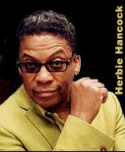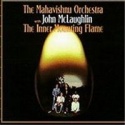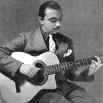Jazz
Current revision
Contents |
Background of Jazz
Jazz music was created in America in the early 1900's. It mainly originated from the African American communities after the abolition of slavery when many of the communities starting picking up European instruments such as the violin and they were very focused on making dance style music with a focus on improvisation, polyrhythms, and other ideas that would come to be best known within the Jazz genre. Jazz is mainly thought to have come from the New Orleans area of America.
In the 1930's big swing bands were the popular music of choice in America and these swing bands were led by some really famous instrumentalists and soloists that arranged all the complexity of the pieces and also could improvise strongly which was a very important aspect of the style. It was very popular across the radios in America and as mentioned earlier was very much music that people danced to because of it's lively and energetic sound. The 1930's also saw the start of Jazz within European Music. This included famous European Musicians such as Django Reinhardt who is known as one of the inventors of Gypsy Jazz.
From this the Jazz genre had already very much taken shape and it was now that some of the really long lasting subgenres were created. These subgenres would take the dance style music and start to head towards the more technical styles that we know of today. This could be seen in Bebop and Hard Bop especially. During the 1940's jazz changed dramatically. The tempo rised significantly on the tracks and the emphasis was no longer on making commercial music.
During the 1970s, Jazz music has a drastic change and it is widely known as the fusion era for Jazz. Many artists were trying to fuse two genres together whether it was with Jazz and the soulful funk style or Jazz and the unrelenting power of rock music. Much experimentation took place and this led to some totally fresh new ideas that weren't explored earlier within Jazz. Probably the first musician to focus on the style of Fusion was Miles Davis who was best known for his cool jazz and hard bop style. The huge acts within Jazz Fusion included the well known bands Mahavishnu Orchestra with John McLaughlin, Return to Forever or Weather Report. The genre doesn't truly exist since the late 80's and there aren't many bands that mix Jazz and Rock music anymore it is very much in a softer state with many ideas found in pop music.
In the 90's and 00's Jazz still exists in many forms and is still being played across the globe however it has slowed down in progression since the years between 1930 and 1980. The last 28 years hasn't seen much change within Jazz and some people believe that Jazz has been over done and has reached the end of what you can achieve within Jazz but for many this will never be the case and Jazz will carry on living as long as people want to express themselves by improvising which isn't as hugely important in other genres.
Subgenres
Jazz has many subgenres including Swing, Classic and Fusion subgenres. There is also a huge difference in the sound and style of these band as well as the instruments they are famous for using. Here are 3 of the more popular subgenres discussed in a little more detail.
Fusion
Many people have thrown around the term Fusion wrongly over the last 40 years and it's meaning has covered so many bands that it is now quite a pointless label. However back in the 60s and 70s bands were classed as being a Jazz Fusion act because they mixed the key aspects of jazz improvisation with the rhythmic and energetic rock genre. Up until the late 60's these two genres had stayed very much apart but they slowly started coming together and creating these new Fusion acts. The bands that were leading the Fusion genre were Weather Report, Mahavishnu Orchestra, Return to Forever, Al Di Meola and Miles Davis. But in the late 70's and into the 80's this genre was more a mixture of Jazz and pop music or Rhythm and Blues and therefore in modern times the word fusion has lost much of its meaning.
Jazz-Funk
As the name suggests this genre was also a fusion of ideas and contained the ideas behind Jazz mixed with the funky vibes of the southern soul bands that were big at the time. There is another subgenre of Jazz known as Soul-Jazz and this is slightly different to Jazz-Funk. Soul-Jazz is much more laid back and carries on grooving whereas Jazz-Funk is much more powerful and usually has a stronger backbeat. There are many artists that are famous within the subgenre and biggest of which is probably Herbie Hancock who started to add a lot more atmospheric ideas to the Jazz-Funk genre.
Swing
Swing was one of the first big Jazz subgenres and came out of the 1930's. There used to be big swing bands around and they included many big jazz figures including Duke Ellington and Glenn Miller. It was mainly dance music back in the 30's and was often played on the radio and although the music was fairly dance orientated in did give the musicians a chance to improvise and showed a lot of melodic ideas that can still be seen in many Jazz bands in the present day.
Top Jazz Acts
Chet Baker
Chick Corea
Billie Holiday
Herbie Hancock
Miles Davis
Mahavishnu Orchestra
Charlie Parker
John Coltrane
Glenn Miller
Top Jazz Albums
Mahavishnu Orchestra - The Inner Mounting Flame
Al Di Meola - Splendido Hotel
Miles Davis - Porgy and Bess
Chick Corea - My Spanish Heart
Return to Forever - Light As A Feather
John Coltrane - A Love Supreme
Ike Quebec - Blue And Sentimental
Lee Morgan - Candy
Art Pepper - Art Pepper Meets The Rhythm Section
Top Jazz Songs
Dizzy Gillespie - A Night In Tunisia
Django Reinhardt - Djangology
Charlie Parker - Koko
Art Blakey - Moanin'
Chet Baker - My Funny Valentine
Miles Davis - So What
Louis Armstrong - Basin Street Blues
Mahavishnu Orchestra - Birds Of Fire








